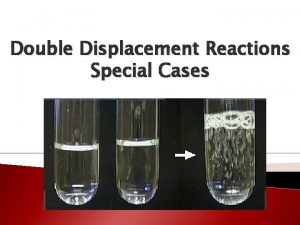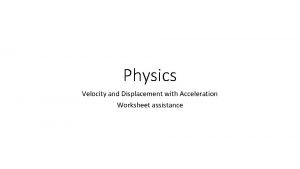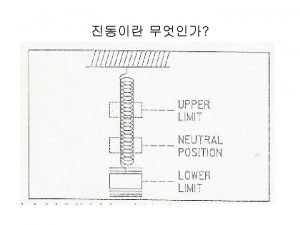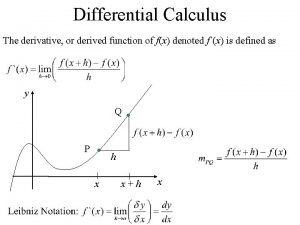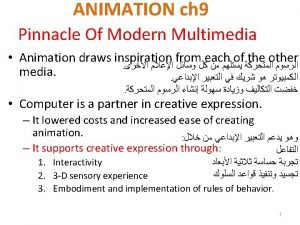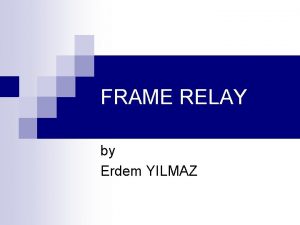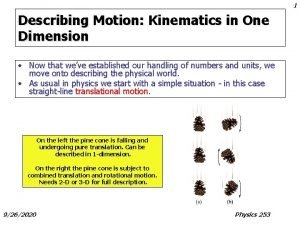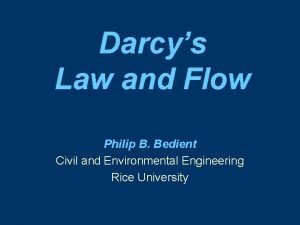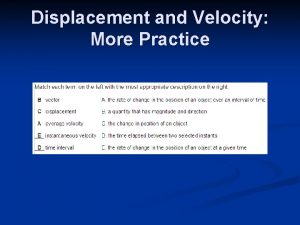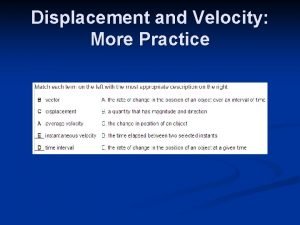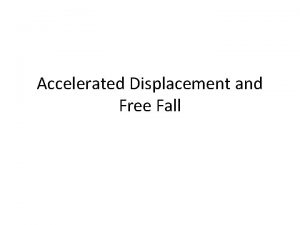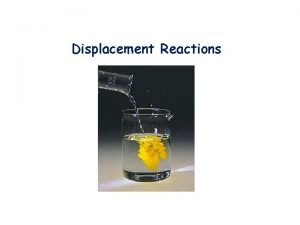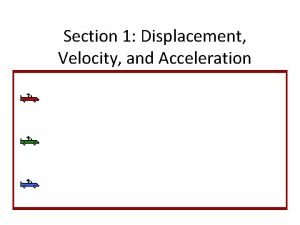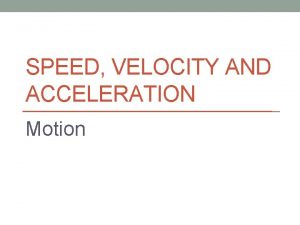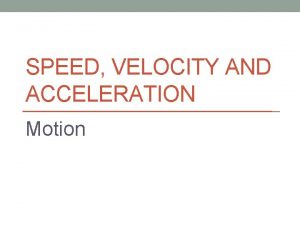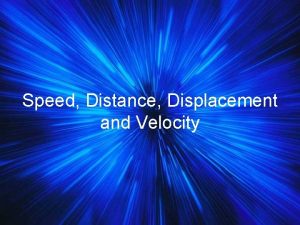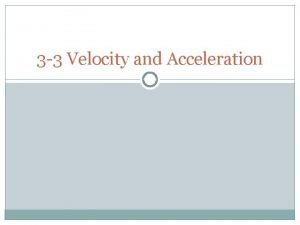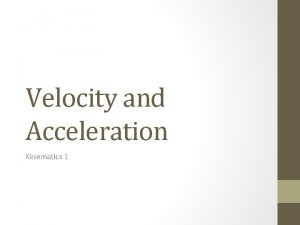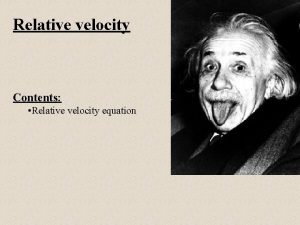Physics Chapter 2 1 Displacement and Velocity Frame














- Slides: 14

Physics – Chapter 2 -1 Displacement and Velocity

Frame of Reference • When measuring displacement, distance, velocity, speed, etc. we need a frame of reference. • Frame of Reference: A system for specifying the precise location of objects in space and time. – Example: A train station could be a frame of reference for measuring how far a train has travelled.

Displacement • Distance and displacement are not interchangeable terms. • Displacement describes how far an object has travelled from it’s initial position. • The formula for displacement is: Δx = xf – xi displacement = change in position = final position – initial position

Vector and Scalar Quantities • Scalar quantities have only magnitude – Example: speed, distance • Vector quantities have both magnitude and direction – Example: velocity, displacement • When an object moves west, south, left, or downward, the vector will be negative.

Displacement

Velocity • Velocity is a vector quantity • Velocity relates the distance covered by an object to the amount of time it took. • Average velocity is the displacement divided by the time interval:

Example • You leave your house to head to your friends birthday party and drive 12. 0 km to west. As you arrive at his house, you realize you forgot to buy a birthday card and have to backtrack 4. 0 km to the east. The entire trip to you 26. 0 minutes. What was your average velocity in kilometers per hour? In meters per second?

Solution Your final location as compared to the initial location is 8. 0 km west, so -8. 0 km. Your total time was 26 minutes, which is 0. 433 of an hour. Converting to m/s:

Practice Problems: Get in the habit of showing units and formulas! 1. It takes you 9. 5 min to walk with an average velocity of 1. 2 m/s to the north from the bust stop to the museum entrance. What is your displacement? 2. Simpson normally drives his car with an average velocity of 48 km/h to the east and has to drive 144 km to work each day. If he increased his average velocity to 56. 0 km/h to the east, how much time would he save in a week, assuming he works Monday to Friday. 3. A bus travels 280 km south with an average velocity of -88 km/. The bus stops for 24 min and then travels 210 km south with an average velocity of -75 km/h. a. How long does the total trip last? b. What is the average velocity for the entire trip?

Solutions 1) 680 m to the north 2) 2. 15 h or 129 minutes 3)

Speed • Speed is a scalar quantity, meaning that direction is not relevant. • Therefore, the average speed of an object is calculated using the distance, not the displacement of an object. Average speed = distance traveled/time of travel

Your parents lend you the car to pick up concert tickets from a friend’s house that is across Managua. When you return home shortly after and before your parents expected you, your parents get mad at you and ask, “How fast were you driving!? !” You tell them that on average for the trip, you drove 0 km/h. They tell you that is purely ridiculous and that you’re grounded. How can physics explain your statement to your parents?

a) Car A travels from New York to Miami at a speed of 25 m/s. Car B travels from Miami to New York at a speed of 25 m/s. Are the velocities of the cars equal? b) New York and Miami are 2054. 6 km apart. How many hours would these cars have to drive for? c) If the driver of the car can only drive for 8 hours before requiring a 2 hour stop for food and a nap, how long would the entire trip take in hours?

• Two students walk in the same direction along a straight path, at a constant speed – one at 0. 90 m/s and the other at 1. 90 m/s. a) Assuming they start at the same point and the same time, how much sooner does the faster student arrive at a destination 780 m away. b) How far would the students have to walk so that the faster student arrives 5. 50 min before the slower student?
 Single displacement vs double displacement
Single displacement vs double displacement Displacement and velocity worksheet
Displacement and velocity worksheet Vibration displacement velocity acceleration
Vibration displacement velocity acceleration Is differential and derivative the same
Is differential and derivative the same Angular acceleration vs linear acceleration
Angular acceleration vs linear acceleration Initial velocity and final velocity formula
Initial velocity and final velocity formula Ms-1
Ms-1 Frame by frame animation programs
Frame by frame animation programs Pengertian animasi frame by frame
Pengertian animasi frame by frame Frame relay frame format
Frame relay frame format What is frame relay
What is frame relay Darcy's law units
Darcy's law units Is v final velocity
Is v final velocity Instantaneous velocity vs average velocity
Instantaneous velocity vs average velocity Darcy's law
Darcy's law
